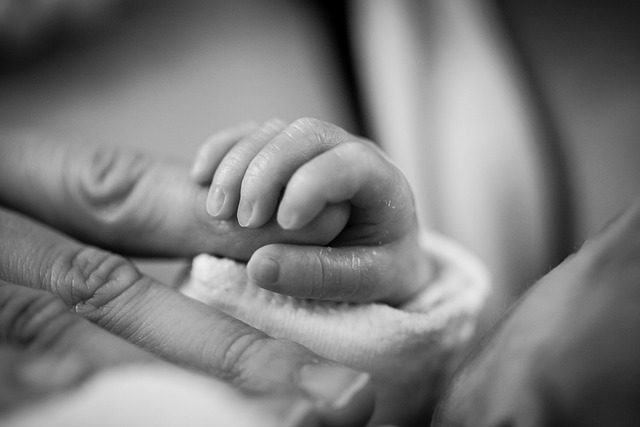
Every pregnancy is a beautiful journey that comes in a package of three: blood, sweat and tears. It is normal for you to experience bleeding after pregnancy and delivery, and its duration and flow will vary from one woman to another.
While most cases of bleeding after birth are normal, the puzzle is distinguishing between normal bleeding after delivery and excessive or abnormal bleeding, which may require medical intervention.
Why do you bleed after birth?
Bleeding after birth, known as “Lochia,” occurs because of the natural healing processes that follow delivery. It is the body’s way of eliminating the excess tissue and blood that supported the pregnancy. It is a vaginal discharge consisting of blood, white blood cells, placental remnants, mucus, and uterine tissue.
What is considered normal postpartum bleeding?
Following delivery, there are several types of bleeding that you may experience, each with its own unique nature and duration.
Immediately after delivery, it is common for you to experience bright red bleeding akin to a heavy menstrual period with clots. This is referred to as Lochia Rubra and typically spans a duration of around 3 to 4 days.
After that, from about day 4-10, the color of your discharge should change to pinkish or brownish. This discharge contains less blood and more serous fluid, giving it its lighter color, known as Lochia Serosa.
From the 2nd-6th week postpartum, the discharge transitions to a whitish or yellowish effluent in color. This is known as Lochia Alba and contains a mixture of mucus, white cells and other cellular materials from the uterine lining.
The bleeding pattern described above is considered normal following vaginal delivery and should not be a cause for concern. If you had a Cesarean section, the amount and duration of lochia discharge would be significantly less because the uterine cavity is usually cleaned manually during surgery. It should last a few weeks.
What is abnormal bleeding after birth?
If at any point during the postpartum period, you experience heavy bleeding or persistent bright red bleeding, large blood clots or foul-smelling bloody discharge, these are considered abnormal and a cause for concern. See your health provider immediately.
What to do about bleeding after birth?
Here are some steps you can use to manage the bleeding:
- Assess the bleeding. It’s important you keep a mental picture of the lochia discharge daily. Assess the amount and type of bleeding. If it is in keeping with an abnormal bleeding pattern, you should contact your healthcare provider.
- Use sanitary pads. During this period, it’s essential you use and change absorbent sanitary pads frequently. Do not use a tampon. Inserting a tampon can introduce bacteria and increase the risk of infection.
- Practice good hygiene. The critical activities you should engage in during this period include hand washing before and after changing your sanitary pads, cleaning the genital area with warm water and using mild unscented soap, keeping the genital area clean and dry and avoiding douching.
- Ensure adequate rest. Increased strenuous activity during this period increases the quantity of lochia discharged. You must pace and prioritize yourself and gradually return to your pre-pregnancy activities. Bed rest is one way to reduce the amount of lochia being released.
- Stay hydrated. Drinking adequate fluid daily will help maintain optimal blood volume, improve circulation and promote overall healing. It also thins out the lochia, making it easier to expel from the body.
- Breastfeeding. Breastfeeding promotes the release of the love hormone oxytocin. This hormone promotes uterine contractions and uterine involution, which help expel the uterine contents and lining.
When should you see the doctor?
You are supposed to see your healthcare provider for a routine postpartum visit, usually at 6 weeks. However, there are certain situations related to bleeding after birth that may require you to make an appointment rather sooner and they include:
- Abnormal bleeding. If you develop heavy bleeding, passage of thick clots or prolonged bleeding, you may need to visit the health facility, where your healthcare provider will assess you and manage you based on the likely cause. Most cases are a result of uterine atony and you may need to be given uterotonics (medications that cause the uterus to contract) to stop the bleeding.
- Signs of infection. If you develop fever, chills, abdominal pain, foul-smelling or abnormal-colored lochia, you may have an infection. You need to visit your healthcare provider, who may place you on broad-spectrum antibiotics to help resolve the infection.
- Perineal defect. If you had a perineal tear, which healed poorly or was poorly repaired, you might need to visit a specialist. A Gynecological Surgeon may recommend you carry out various options of vaginal rejuvenation (e.g., vaginoplasty and perineoplasty) that can help improve the aesthetic appearance and function of the vagina.
- Concerns or questions. If you have concerns or questions about your lochia, its duration, color or other health-related issues, you should contact your healthcare provider, who will provide guidance and reassurance.
Conclusion
If you or a friend experiences bleeding after birth, relax and know it’s part of the journey. Check and see if you’re experiencing normal or abnormal postpartum bleeding. If it’s the latter, stay calm and contact your healthcare provider. Everything will get better. After all, motherhood comes in a package of three: love, laughter and lullabies.
About the Author
Dr. Ammar Mahmoud is a highly respected cosmetic gynecological surgeon known for his expertise in minimally invasive procedures. He has a particular focus on sexual wellness and function. He has trained at St. George’s University, where he served as Vice President of the Medical Honor Society and on the board of the Anatomical Clinical Research Society. Dr. Mahmoud also completed his residency at the State University of New York Downstate, where he currently serves as a clinical associate professor. In recent years, he has given a keynote speech on advanced labiaplasty and vaginoplasty techniques and has been a faculty member at the International Cosmetic Gynecology Conference in 2018 and 2019. Dr. Mahmoud is a member of the American Society of Cosmetic Surgeons and the American Society of Cosmetic Laser Surgery. He is dedicated to providing his patients compassionate and professional care based on individual needs.
